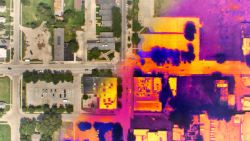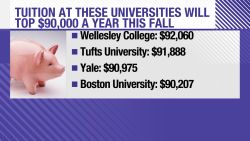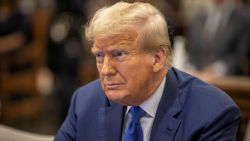The US Commerce Department on Friday detailed new restrictions on American companies from doing business with five Chinese entities that make supercomputers and supercomputer components.
The Commerce Department said it is placing Wuxi Jiangnan Institute of Computing Technology and Sugon, as well as three entities tied to Sugon, on its “Entity List” of businesses that threaten America’s national security, according to an unpublished Federal Register notice. The restrictions are scheduled to take effect Monday.
The Commerce Department said the companies use their supercomputers and components for military and nuclear purposes. US companies won’t be able to export components to the five listed companies without a license. The restrictions are similar to the ones the United States recently placed on Huawei.
Sugon is a major provider of data centers and supercomputers in China, and one of the leading computer systems manufacturers in the world. On its website, Sugon says it has provided technical support for “China’s advancement of fundamental scientific research, significant scientific equipment and industrial development.” To do that, it buys from American companies including Intel (INTC), Nvidia Corp. and AMD.
AMD in particular stands to lose because of the decision.
In 2016, AMD entered into a joint venture with a Chinese holding company that is partly owned by Sugon. That partnership formed two separate entities, both of which are named in the Commerce Department’s brief: Chengdu Haiguang Integrated Circuit and Chengdu Haiguang Microelectronics Technology. The holding company and AMD share ownership of those businesses, though AMD owns most of one, while the Chinese company owns most of the other.
As part of that partnership, AMD licenses the intellectual property for its microchip technology to the companies, which use it to develop chips for servers sold in China.
Those chips and servers contribute to the Made in China 2025 effort, a state industrial plan announced in 2015 that prioritizes domestic production of high tech goods.
In 2018, AMD earned $86 million in revenue related to the licensing of its intellectual property under the deal, according to US government filings. It is unclear how the joint venture will be affected by the Commerce Department decision to stop US sales to the companies.
“We are currently evaluating the addition of five new entities to the Entity List by the Bureau of Industry and Security,” an AMD spokesperson said in an emailed statement. “AMD will comply with the regulations governing that list, just as we have complied with US laws to date. We are reviewing the specifics of the order to determine next steps related to our joint ventures” in China.
Intel and Nvidia declined to comment.
The United States and China have been embroiled in a bitter battle over supercomputer dominance for years. The United States has long stated that holding the most powerful supercomputers are crucial for national security.
Supercomputers are used for scientific research, including medical treatments and weather prediction. But they are also used for military and nuclear modeling around the world.
The US Department of Energy holds the world’s fastest supercomputer in its Oak Ridge National Laboratory in Oak Ridge, Tennessee. The supercomputer, called Summit, is capable of 148 quadrillion — one million billion — calculations per second. That’s nearly 30,000 times faster than an iPhone Xs.
The United States has held the fastest supercomputer title since June 2018, according to the Top500, an independent study of the world’s supercomputers. China had held the No. 1 position from November 2013 until June 2018. Before then, the United States had consistently topped the list.
Of the top 500 supercomputers, China holds the largest number of systems: 219. The United States has only 116 of the 500 fastest computers in the world.
But the United States’ horde of supercomputers controls 38.4% of the supercomputing power. It houses the top two systems in the world, which alone represent 15.6% of the world’s supercomputing power, according to Top500.
China controls just under 30% of the world’s supercomputing power.
























